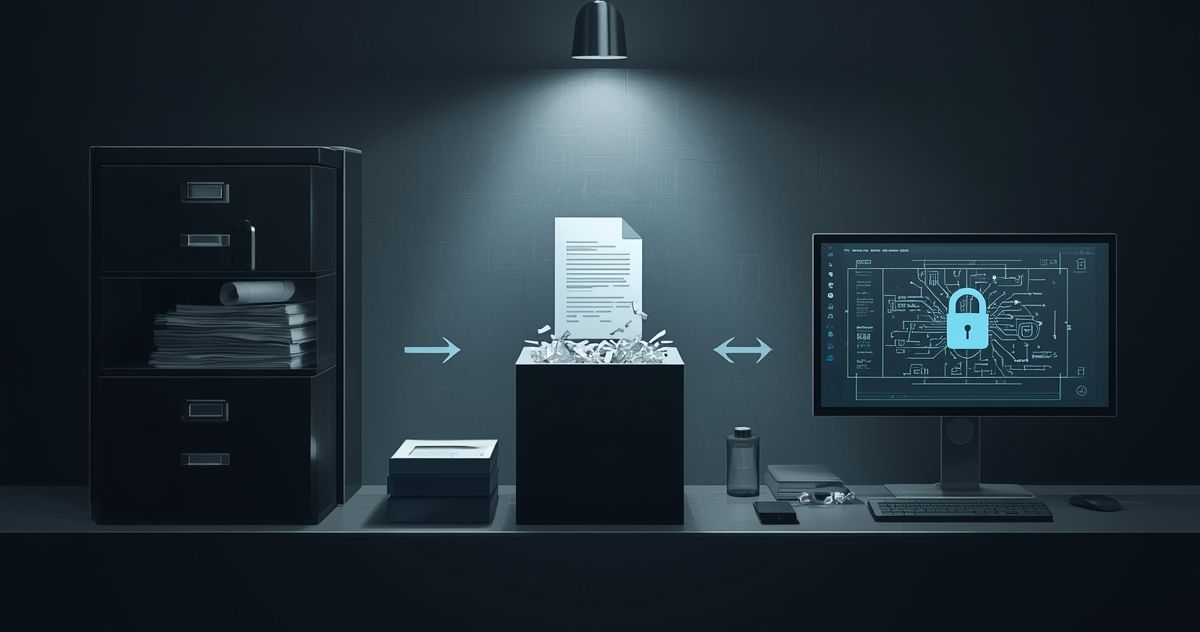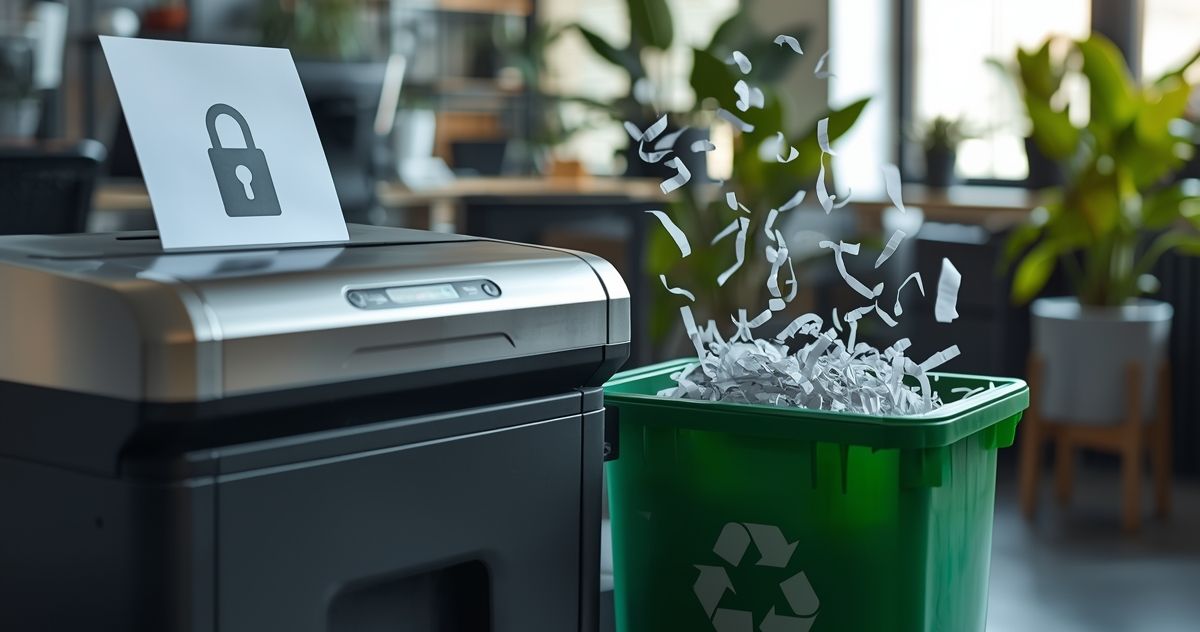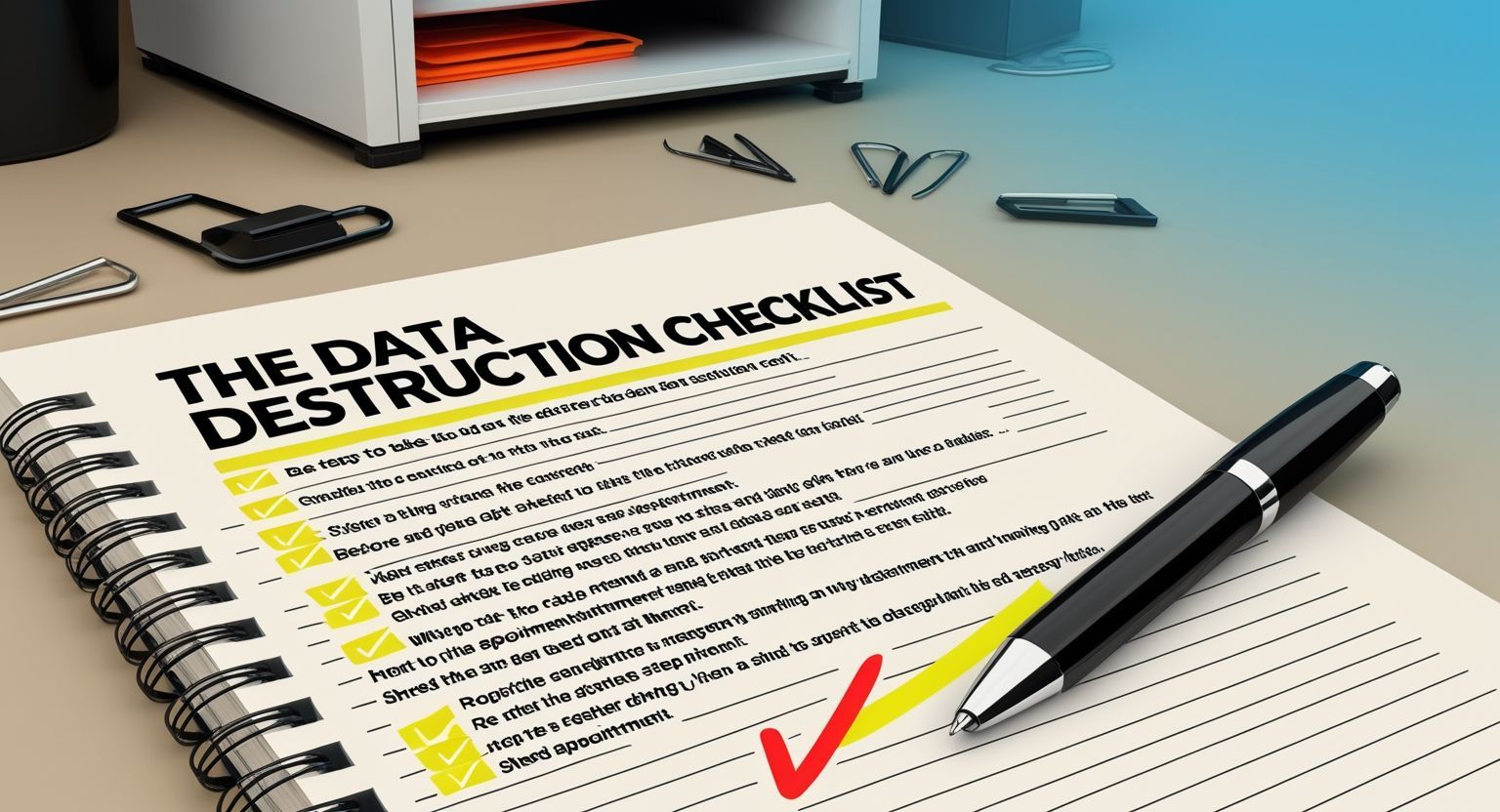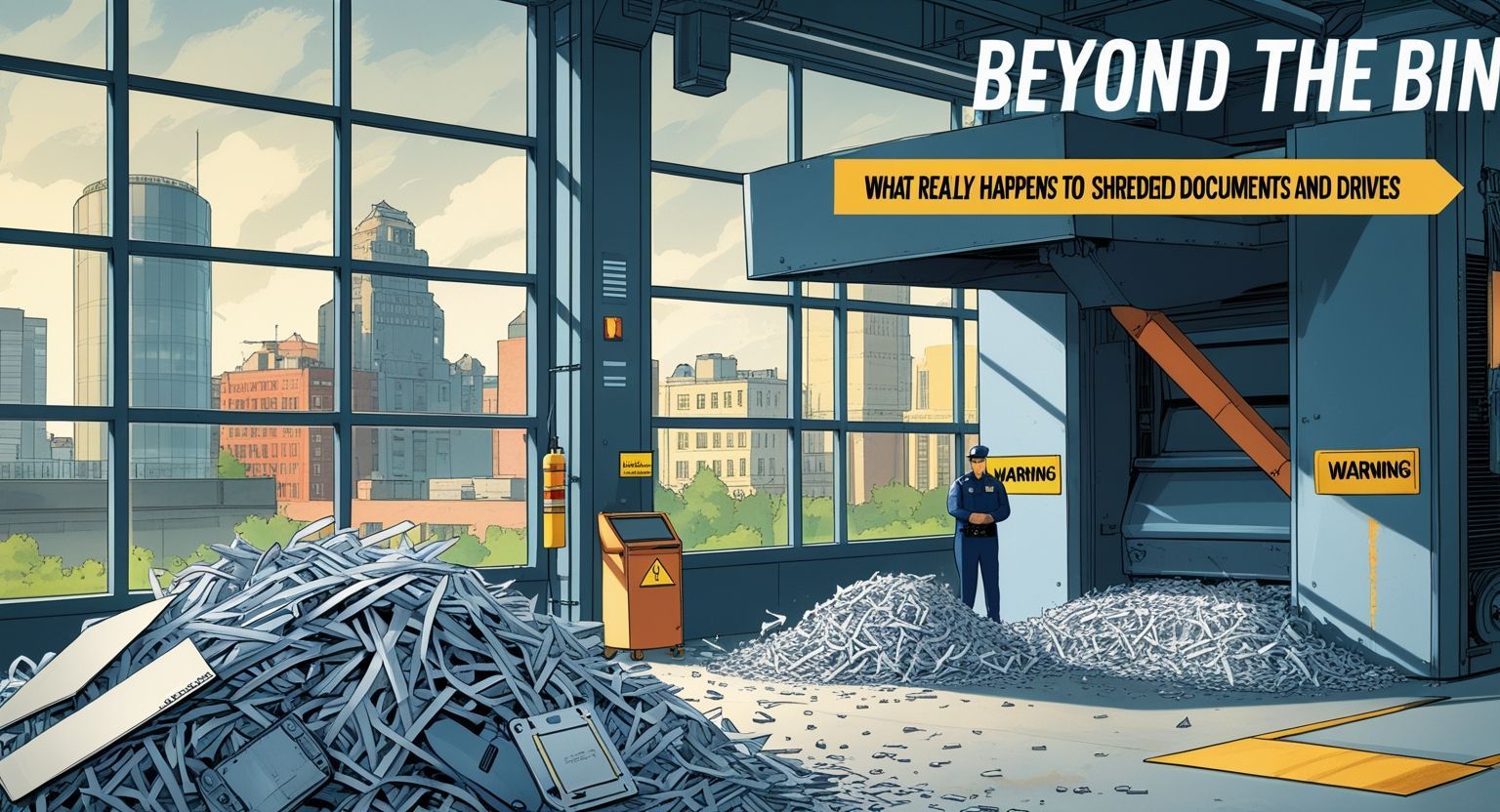End-of-Year Shredding Strategy: How to Start the New Fiscal Year with a Clean Slate
End-of-Year Shredding Strategy | Start the New Fiscal Year with a Clean Slate
As the fiscal year draws to a close, many businesses focus on wrapping up financials, preparing reports, and setting goals for the upcoming year. But one important step often gets overlooked—secure document and media shredding. An organized end-of-year shredding strategy not only helps you clear physical and digital clutter but also ensures compliance with data protection regulations and minimizes risk as you enter the new fiscal year.
Why End-of-Year Shredding Matters
Every organization generates a significant amount of confidential data throughout the year—client files, financial records, employee information, and outdated media. If these materials are no longer needed, keeping them around can lead to unnecessary risks, such as data breaches or non-compliance penalties. Shredding ensures sensitive information is permanently destroyed, reducing liability and creating space for new documents and equipment in the coming year.
According to a 2024 report by IBM, the global average cost of a data breach reached $4.88 million. Many of these breaches stemmed from mishandled physical records and outdated storage media. That’s why companies are now prioritizing secure data destruction as part of their end-of-year routine.
Benefits of a Year-End Shredding Plan
Implementing a shredding plan before the fiscal year ends offers several practical and compliance advantages:
- Enhanced Data Security: Secure shredding eliminates the risk of sensitive information falling into the wrong hands.
- Regulatory Compliance: Many industries—like finance, healthcare, and law—are governed by strict data retention and destruction rules. Regular shredding ensures your business meets these requirements.
- Improved Organization: Removing outdated files and media makes room for new documents, equipment, and storage.
- Cost Efficiency: Storing unnecessary records takes up space and costs money. Shredding what you no longer need helps reduce long-term storage expenses.
- Environmental Responsibility: Professional shredding companies recycle shredded paper and media materials, supporting sustainable business practices.
Steps to Develop an Effective Shredding Strategy
1. Review Your Retention Policy
Start by reviewing your company’s document retention policy. Identify which files and records are required to be kept for legal, tax, or operational reasons, and determine which can be securely destroyed. Different types of records have varying retention periods—for example, tax records may need to be stored for seven years, while certain HR documents might require longer retention.
2. Identify Materials for Destruction
Once you’ve reviewed your policy, create an inventory of documents and media that are no longer needed. This can include:
- Old financial records
- Outdated contracts and proposals
- Expired employee or vendor files
- Obsolete storage devices such as CDs, DVDs, and hard drives
- Archived materials that have exceeded their retention period
3. Choose a Trusted Media Shredding Service
Partnering with a certified data destruction company is crucial to ensure your information is handled securely. Look for a provider that follows strict security protocols and offers on-site and off-site shredding options. Professional shredding ensures compliance with federal and state data protection laws, while providing proof of destruction through a Certificate of Destruction.
4. Schedule Regular Shredding Services
Instead of waiting until the end of the year, consider scheduling shredding services on a regular basis—monthly, quarterly, or biannually. This keeps data under control throughout the year and makes the year-end cleanup far easier. Regular shredding also reduces the risk of confidential information accumulating over time.
5. Educate Your Employees
Data security is a shared responsibility. Train your team on how to identify sensitive information and how to properly dispose of it. Encourage them to separate documents that require shredding from general waste and to handle confidential materials responsibly.
6. Maintain Records of Destruction
Always keep documentation of what has been destroyed and when. Certificates of Destruction serve as proof of compliance and can protect your organization in case of audits or data-related disputes.
Preparing for a New Fiscal Year
When you start a new fiscal year with organized and secure records, it sets a positive tone for the months ahead. A clean workspace reduces stress and improves efficiency. Employees can locate necessary files more easily, while management gains confidence that data handling practices meet compliance standards.
By integrating shredding into your annual closing routine, you not only protect your business but also reinforce a culture of responsibility and trust. Data destruction is not just about getting rid of old papers—it’s about safeguarding your company’s reputation and the privacy of everyone it serves.
Partnering with the Right Shredding Provider
Data Shredder Corporation specializes in secure media and document destruction services designed to protect businesses of all sizes. Their team follows industry best practices to ensure that every piece of sensitive information is thoroughly destroyed and responsibly recycled. Whether you need a one-time purge before the new fiscal year or ongoing scheduled services, they provide customized solutions that align with your organization’s needs.
Key Takeaways
- Conduct a thorough review of your document retention policy before shredding.
- Identify records and media ready for secure destruction.
- Partner with a certified shredding provider for professional handling.
- Schedule regular shredding services to maintain compliance year-round.
- Keep certificates of destruction for audit and compliance purposes.
Conclusion
Starting the new fiscal year with a clean slate isn’t just about organizing your office—it’s about protecting your business, your data, and your reputation. A thoughtful end-of-year shredding strategy helps ensure that sensitive information doesn’t linger longer than necessary, reducing risks while improving efficiency and peace of mind.
If you’re ready to streamline your data destruction process and prepare your business for the year ahead, contact Data Shredder Corporation today. Learn more about secure document and media shredding services at https://www.datashredder.net/.











Share On: